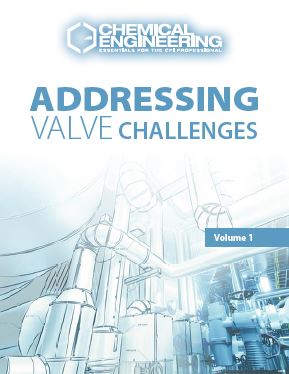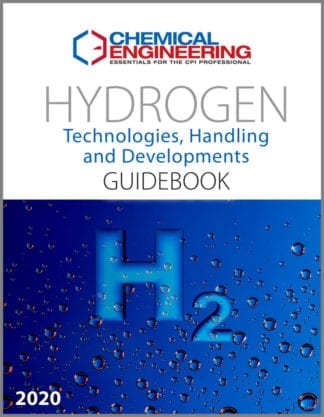Description
This Chemical Engineering Guidebook provides useful engineering recommendations for selecting, operating, maintaining and troubleshooting pumps to ensure safe, cost-effective operation.
Several articles focus on reciprocating pumps and positive-displacement pumps, while others focus on selection and fabrication of pumps for hygienic applications in biopharmaceutical, food-and-beverage and other applications that carry out pristine processing.
Suggestions on sizing and specifying pumps, and calculating the appropriate net positive suction head (NPSH) to meet the application are included. Guidance is provided for selecting sealless pumps to ensure full product containment, and for carrying out condition monitoring of pumps and other rotating machinery.
Also included are engineering recommendations for setting appropriate foundations for equipment (to minimize vibration and misalignment), and a review of principles of piping and instrumentation diagrams (P&ID) development, and coupler technologies that ensure secure chemical handling. There is also review of best practices in commissioning capital equipment, and the use of corrosion data to monitor aging assets.
Delivered in a PDF format, 156 pages.
Articles Include:
Principles of P&ID Development
• The tips provided here will streamline efforts to develop piping & instrumentation diagrams
Mixing: Impeller Performance in Stirred Tanks
• Characterizing mixer impellers on the basis of power, flow, shear and efficiency
Integrity of Aging Assets: Using Corrosion Data to Stave Off Extinction
• Petroleum refineries built in the 1960s and 1970s have trouble dealing with the corrosive effects of modern feedstocks.
Continuous monitoring of corrosion can prevent process equipment failures
Crossflow Membrane Filtration Essentials
• Several aspects of crossflow membrane filtration , including process design, equipment selection and control, are detailed here
Positive Displacement Pumps
Flow Profile for Reciprocating Pumps
Fire-Water Pumps for CPI Facilities
• Follow this guidance to improve the selection, design and operation of pumps handling water for fire-fighting and related systems
Considerations for Estimating the Costs of Pilot-Scale Facilities
• The differences between industrial-scale facilities and pilot plants go beyond size, and these intricacies must be understood when estimating the costs associated with pilot-scale facilities
Engineering & Construction (E&C): Modeling Integration Enables Optimized Execution
• As E&C companies strive to develop Building Information Modeling (BIM) 6D models for the owners and operators of CPI facilities, strong efficiency gains benefit all parties
Sizing, Specifying and Selecting Centrifugal Pumps
• Follow these tips to determine preliminary pump sizing, to support cost-estimation efforts
Pump Sizing and Selection Made Easy
• Viscosity, power consumption, commercial availability and lifecyle cost analysis are all important considerations in pump sizing. An automated spreadsheet method helps engineers take those factors into account in centrifugal pump selection
Lifecycle Costs for Capital Equipment In the CPI
• Longterm equipment costs need to be fully considered in capital-cost assessments
Field Troubleshooting 101 and How to Get the Job Done
• A major part of field work lies in troubleshooting problems: finding out why a system is not operating the way it is intended. This article provides guidelines for effective troubleshooting and contains many practical examples of their successful use
Using Corrosion as a Process Variable
• Monitoring and analyzing historical corrosion data can provide insights not available from manual inspection and measurement techniques
Hygienic Process Equipment Fabrication
Condition Monitoring for Rotating Machinery
• This valuable insight into the performance of pumps and compressors will help improve operation
Storage Tanks: Heating and Cooling System Design
• Various heating or cooling options are described here, along with the factors and design parameters that need to be considered. A sample calculation regarding coils is included
Precision Grouting: Setting the Foundation for Equipment Reliability
• A clear understanding of grout material properties is important to ensure that equipment is effectively protected against vibration and misalignment
Safety in sulfuric acid storage tanks
• Commonly used in the CPI, sulfuric acid requires many special precautions to ensure its safe handling and storage
Best Practices in Capital Equipment Commissioning
• Ensuring that real-world commissioning tests are properly executed can benefit both equipment end users and suppliers
Coupler Technologies for Secure Chemical Handling
• Significant improvement in reducing fluid loss, optimizing flow paths and easing operation are among the advances in next generation coupler technologies
Variable Frequency Drives
Calculate NPSH with Confidence
• Determining net positive suction head (NPSH) can be confusing, but with these guidelines, engineers can avoid the pitfalls of incorrect calculations
The Benefits of Seal-less Pumps for Full Product Containment
• In cases where full containment of dangerous and hazardous chemicals is necessary, seal-less pumps can provide many safety and operational benefits
Addressing Pumping Issues in Biopharmaceutical Operation
• Quaternary diaphragm pumps deliver the low pulsation and shear that is critical to these biopharmaceutical and continuousmanufacturing operations
Condition Monitoring Methods for Pumps
• Applying condition monitoring tests to pumps can save costs by optimizing overhaul scheduling




